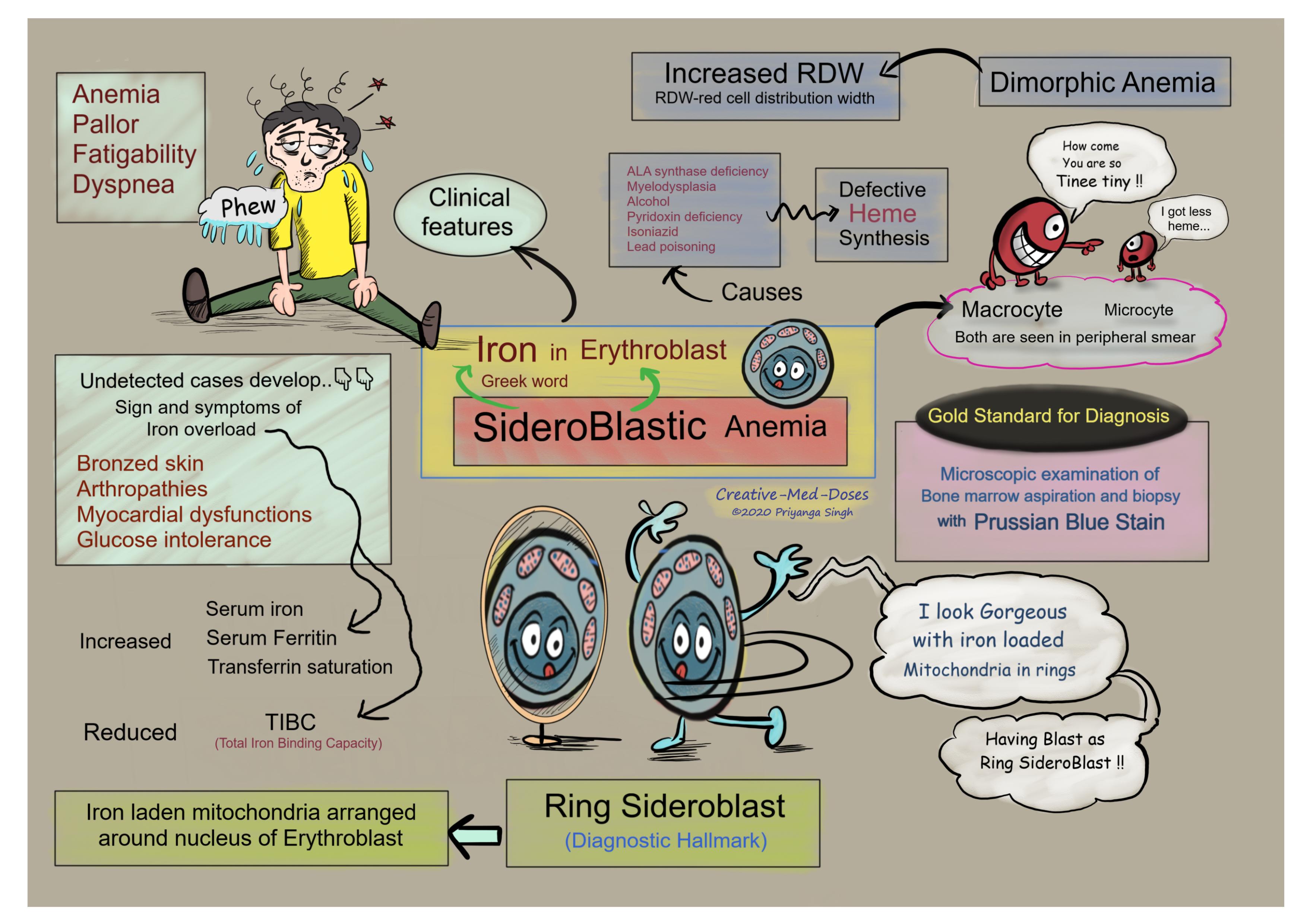Sideroblastic anemia: Anemia with Ring Sideroblasts
Sideroblastic anemia is inherited or acquired anemia characterized by pathological iron accumulation in the mitochondria of erythrocyte precursors. These iron-laden mitochondria encircle erythroblast nuclei, giving rise to the defining morphological feature of the ring sideroblasts (RS).
Ringed sideroblasts (iron-laden erythrocytes with Prussian-blue stained mitochondria) seen on bone marrow aspirate are diagnostic hallmark for sideroblastic anemia.
...

...
Pathogenesis
Defective heme synthesis is central to pathogenesis of sideroblastic anemia.
Following are most common causes –
- MDS (Myelodysplasia)
- Alcohol (most common acquired cause)- it causes reduced absorption of vitamin B6 which is cofactor for heme synthesis enzyme ALA synthase (Aminolevulinic acid synthase).
- Isoniazid- this antituberculosis drug also reduces B6 levels.
- Copper deficiency
- Lead poisoning
- Pyridoxine (B6) deficiency
- Hereditary (ALA Synthase defect)
Clinical features
The signs and symptoms result from a combination of reduced hemoglobin and an overload of iron. They range from mild to severe and most often appear in young adulthood. Most common features include weakness, fatigue, dizziness, a rapid heartbeat, pale skin, and an enlarged liver and spleen (hepatosplenomegaly). Over time, severe medical problems such as heart disease, liver damage (cirrhosis) and diabetes can result from the buildup of excess iron in these organs. Read more about Iron overload here https://creativemeddoses.com/topics-list/hemochromatosis-bronzed-iron-man/
Diagnosis
Sideroblastic anemia is primarily a laboratory diagnosis, made based on bone-marrow examination with Prussian blue stain. Bone marrow aspiration and biopsy are gold standard for diagnosis.
Patients with sideroblastic anemia have anemia with a low reticulocyte count and no obvious nutritional deficiencies or associated systemic conditions which can explain the anemia.
Peripheral blood examination often reveals a dimorphic population of red cells (macrocytes and microcytes with basophilic granules (pappenheimer bodies) in the red cell.
Lab values-
- ↑ serum iron, ferritin, and transferrin saturation
- ↓ TIBC (Total Iron Binding Capacity)
Treatment
- Removal of toxic agents such as alcohol and lead from diet.
- Administration of pyridoxine (B6)
- Severe anemia cases might need transfusion (along with antidotes if iron overload develops from transfusion).
Subscribe YouTube channel https://www.youtube.com/channel/UCum2ipWFIH68Xt3houEkyKA
Revision for today https://creativemeddoses.com/topics-list/acute-respiratory-distress-syndrome-ards/